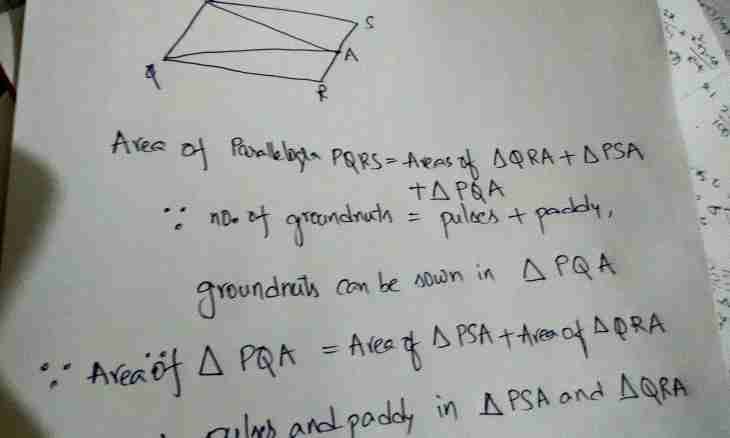Any convex and flat geometrical figure has the line limiting its internal space - perimeter. At polygons it consists of separate pieces (parties) which sum of lengths determines perimeter extent. The site of the plane limited to this perimeter can be expressed through lengths of the parties and corners in figure tops too. The corresponding formulas for one of types of polygons - a parallelogram are given below.
Instruction
1. If in statements of the problem lengths of two adjacent parties of a parallelogram are given (an and b) and corner size between them (γ), it will be enough for calculation of both parameters. For calculation of perimeter (P) of a quadrangle put lengths of the parties and double the received value: P = 2 * (a+b). It is necessary to calculate the area (S) of a figure by means of trigonometrical function - a sine. Multiply lengths of the parties, and increase result by a sine of the known corner: S = a*b*sin(γ).
2. If length of only one of the parties (a) of a parallelogram is known, but there are data on height (h) and size of a corner (α) in any of polygon tops, then it will allow to find both perimeter (P) and (S) Square. The sum of all corners in any quadrangle is equal 360 °, and in a parallelogram those from them that lie in opposite tops, are identical. Therefore for finding of size of the corner which remained the unknown take away from 180 ° the size of known. After that consider the triangle made of height and the corner lying opposite to it which sizes are known and also the party unknown so far. Apply to it the theorem of sine, and find out that length of the party will be equal to height relation to a sine of the angle lying opposite to it: h/sin(α).
3. After carrying out predesigns of the previous step make the necessary formulas. Substitute the received expression in a formula of finding of perimeter from the first step and receive such equality: P = 2 * (a+h/sin(α)). In case height connects two opposite sides of a parallelogram which length is given in initial conditions, for finding of the area just multiply these two values: S=a*h. If this condition is not met, then substitute the expression for other party received in the previous step to a formula: S=a*h/sin(α).

